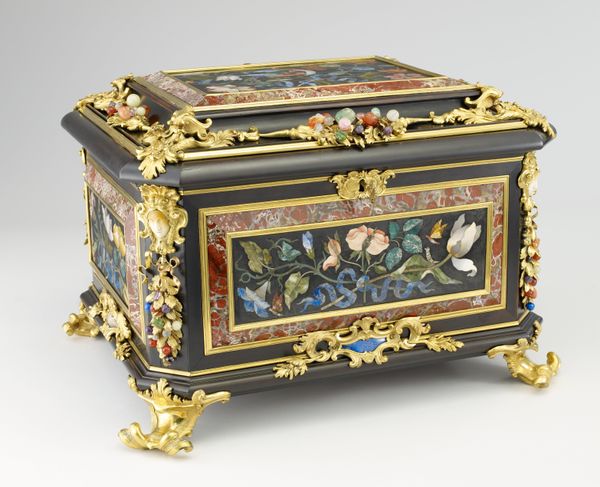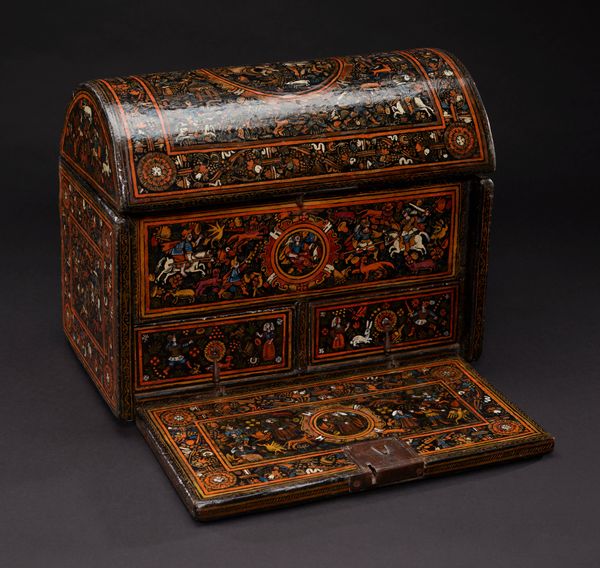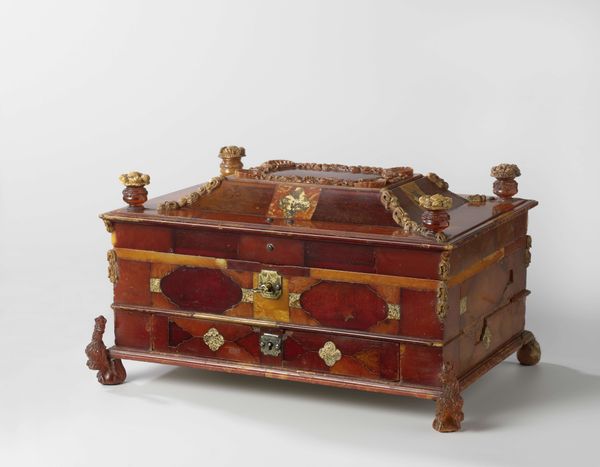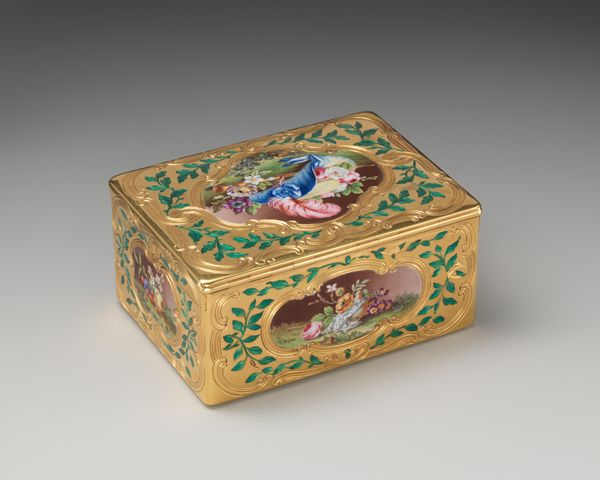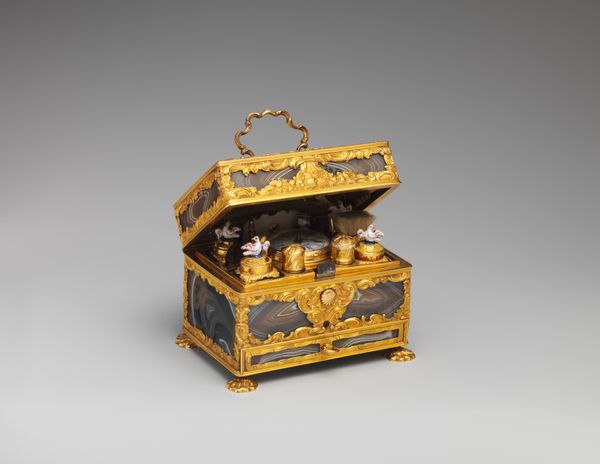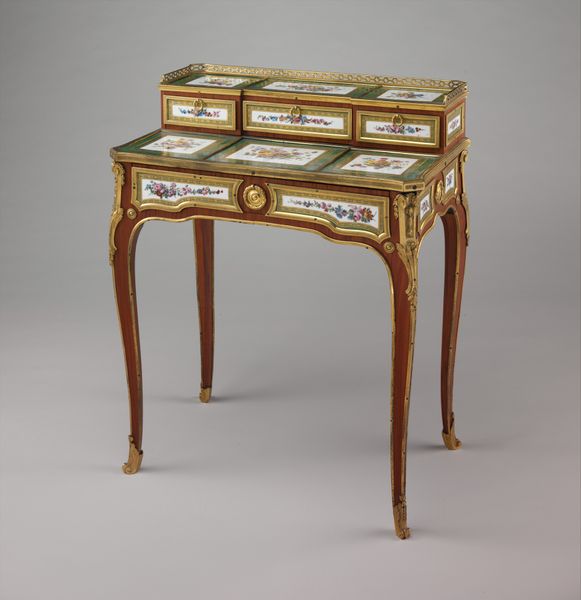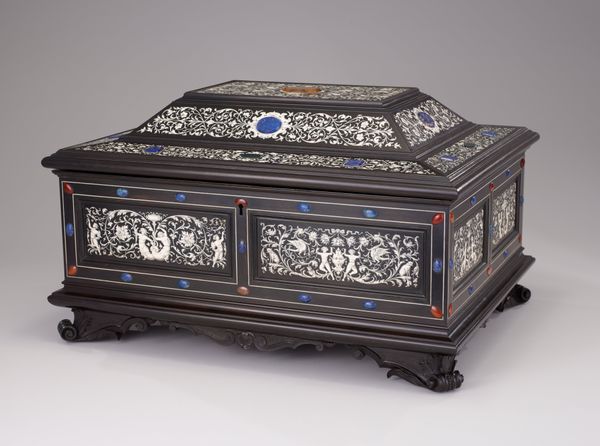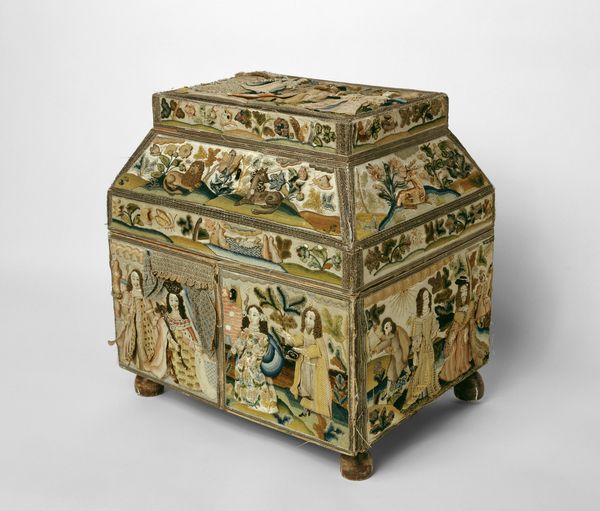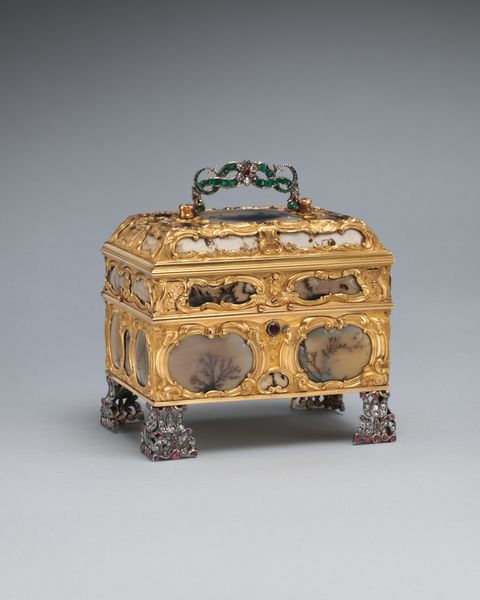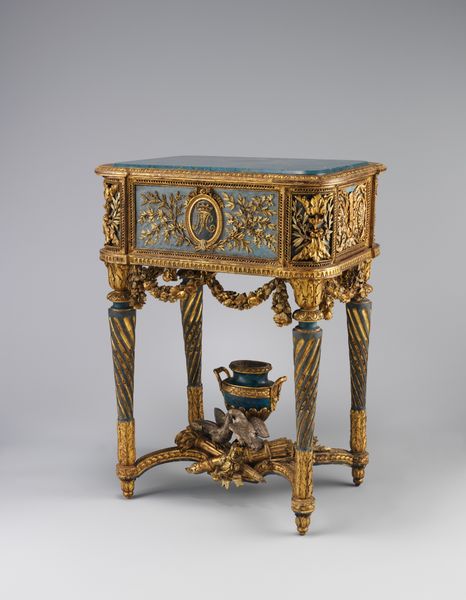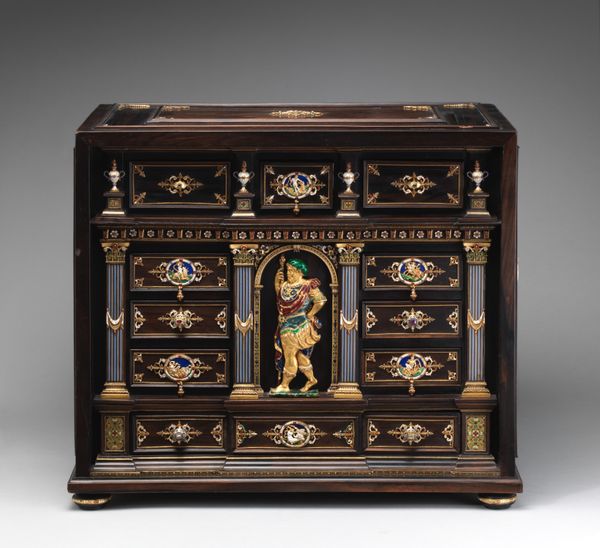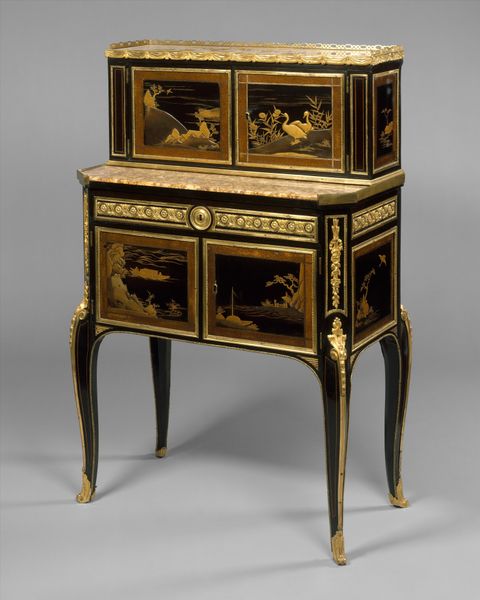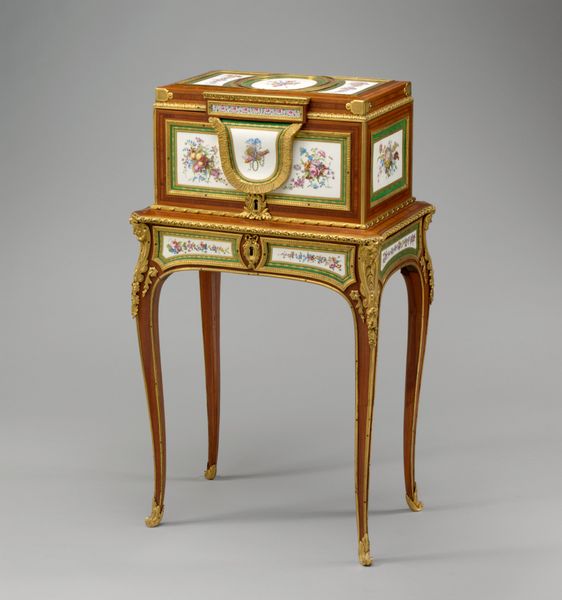
silver, metal, sculpture, enamel
#
medieval
#
silver
#
narrative-art
#
metal
#
figuration
#
sculpture
#
enamel
#
men
#
decorative-art
Dimensions: Overall: 7 3/4 × 9 1/2 × 5 1/4 in. (19.7 × 24.1 × 13.3 cm)
Copyright: Public Domain
Curator: This intriguing object is a casket, dating from 1600 to 1625, made by Suzanne de Court. The piece, currently held at the Metropolitan Museum of Art, incorporates silver and enamel and depicts scenes from Genesis. Editor: My first impression is one of density. There is an almost overwhelming amount of narrative packed into this relatively small object. The use of vibrant color and precious materials elevates it from mere utility to something profoundly symbolic. Curator: Indeed. Let’s consider the labor involved. The mining and processing of silver, the careful application of enamel, all of it speaks to a network of production and consumption. Who commissioned such a piece? What did it signify to them? The materiality is inextricable from its social context. Editor: Precisely! The craftsmanship here is undeniably exquisite, drawing your attention immediately to form, shape and the balanced distribution of figures and landscapes across its surfaces. Note the rounded form, punctuated with detailed narrative scenes and delicate silver work that borders each frame, emphasizing linear perspectives to guide our eye through the biblical narratives. Curator: Right, but think about the narratives represented—the creation of man, Noah’s Ark, the story of Cain and Abel. Each chosen for a specific theological or social purpose relevant to the owner and the cultural climate from whence they came. These aren't merely decorations; they're tools for remembering, and reaffirming power structures. Editor: Absolutely, the object communicates in very clear language, employing universally recognized imagery. Observe the careful design, consider its arrangement: each scene precisely rendered with the limited palette of enamel and its contribution to understanding how the narrative is presented and the aesthetic intentions are carried out. Curator: Yes. Consider also, that silver was becoming increasingly available, even circulating, globally. How does that material shift alter notions of value, craft production, artistic agency? Court’s creation here becomes representative of material exchange within court culture and increasing religious interest, and is no accident. Editor: Yes, these objects act as symbols embedded in their era, offering insights to our own. When viewing, its intricate panels allow for continuous discovery—truly a synthesis of skill and meaningful visual articulation that elevates mere objects of craftsmanship to artworks. Curator: Exactly, by situating "Casket with scenes of Genesis" within its time and interrogating it through production and the social world, its symbolic power takes on deeper, historically situated significance. Editor: An engaging and materially rich illustration of form and symbol culminating from historical context.
Comments
No comments
Be the first to comment and join the conversation on the ultimate creative platform.
